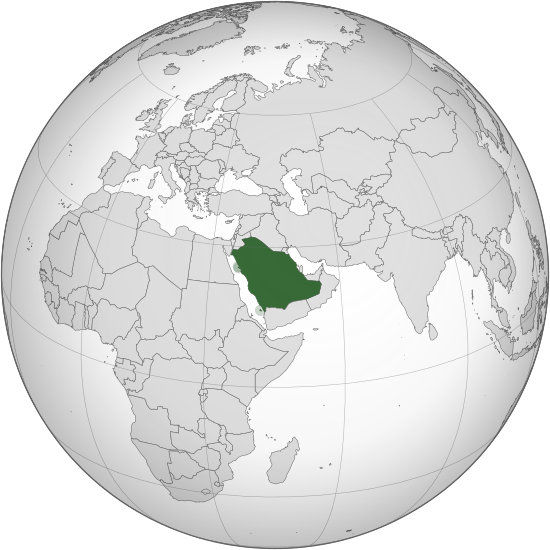 Saudi Arabia (officially the Kingdom of Saudi Arabia) (Arabic: المملكة العربية السعودية) is the largest Arab country of the Middle East. It is bordered by Jordan and Iraq on the north and northeast, Kuwait, Qatar, Bahrain and the United Arab Emirates on the east, Oman on the southeast, and Yemen on the south. The Persian Gulf lies to the northeast and the Red Sea to its west.
Saudi Arabia (officially the Kingdom of Saudi Arabia) (Arabic: المملكة العربية السعودية) is the largest Arab country of the Middle East. It is bordered by Jordan and Iraq on the north and northeast, Kuwait, Qatar, Bahrain and the United Arab Emirates on the east, Oman on the southeast, and Yemen on the south. The Persian Gulf lies to the northeast and the Red Sea to its west.
It has an estimated population of 28 million, and its size is approximately 2,149,690 square kilometres (830,000 sq mi).
The Kingdom is sometimes called “The Land of the Two Holy Mosques” in reference to Mecca and Medina, the two holiest places in Islam. The two mosques are Masjid al-Haram (in Mecca) and Masjid Al-Nabawi (in Medina).
The current Kingdom was founded by Abdul-Aziz bin Saud, whose efforts began in 1902 when he captured the Al-Saud’s ancestral home of Riyadh, and culminated in 1932 with the proclamation and recognition of the Kingdom of Saudi Arabia, though its national origins go back as far as 1744 with the establishment of the First Saudi State. Saudi Arabia’s government takes the form of an Islamic absolute monarchy.
Oil accounts for more than 90% of exports and nearly 75% of government revenues, facilitating the creation of a welfare state, which the government has found difficult to fund during periods of low oil prices.

Notes from Wikipedia








